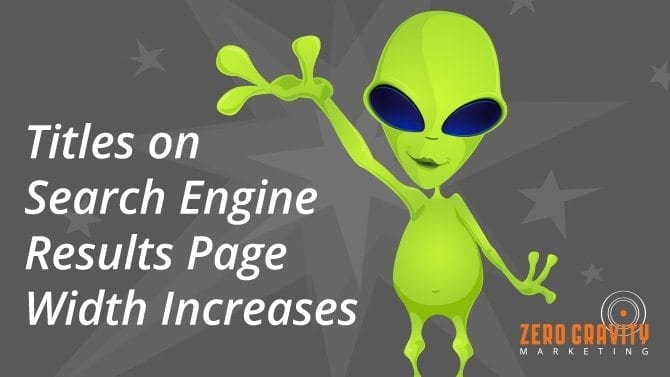
Width Increases for Titles on Search Engine Results Page
The Google search engine results page is wider — and that’s big news for SEO and Digital Marketing. The increased width in design is changing the way that results are displayed on the search engine results pages (SERPs). Here are a few positive changes that have come as a result of this revamped design:
Increased Title Tags
With the new changes, title tags have increased to about 70 characters. Previously, digital marketers and SEO professionals had to stick to a strict 55-60 character maximum for their title tags, or risk the title being incomplete on the main search results page or penalties from Google. No one wants to see the dreaded ellipses that indicate a title was too long. Now, keyword-rich titles can be created with up to 70 characters, giving a little more room create your targeted marketing message without stressing about whether or not the full message will be visible on the results page.
Search Results Move Higher on the Page
The height of several items on the main search column have been reduced, which helps move the organic search results higher on the page. This will vary based on the actual search and the results that are produced, but it could be great news for some who were pushed lower on the page after additional AdWords ads were placed at the top.
Wider Google AdWords Space
The changes to the AdWords space were rolled out after the width was increased on the main search column, but now PPC / AdWords is enjoying a new width of about 600 pixels. The updated design has cleaned up the display of AdWords, and has helped improve the functionality of the main search column. The width has been adjusted at both the top and bottom of the SERPs, ultimately giving the end user a consistent and clean design for all search queries.
Previously, the organic search results column was 512 pixels, but the new design increases that width to about 600 pixels. The changes appear to have rolled out in the last several weeks, going live to many searchers across the globe. This means that the new design is likely not the result of a traditional 1% test by Google, where about 1% of searchers see the new changes during a testing period.





